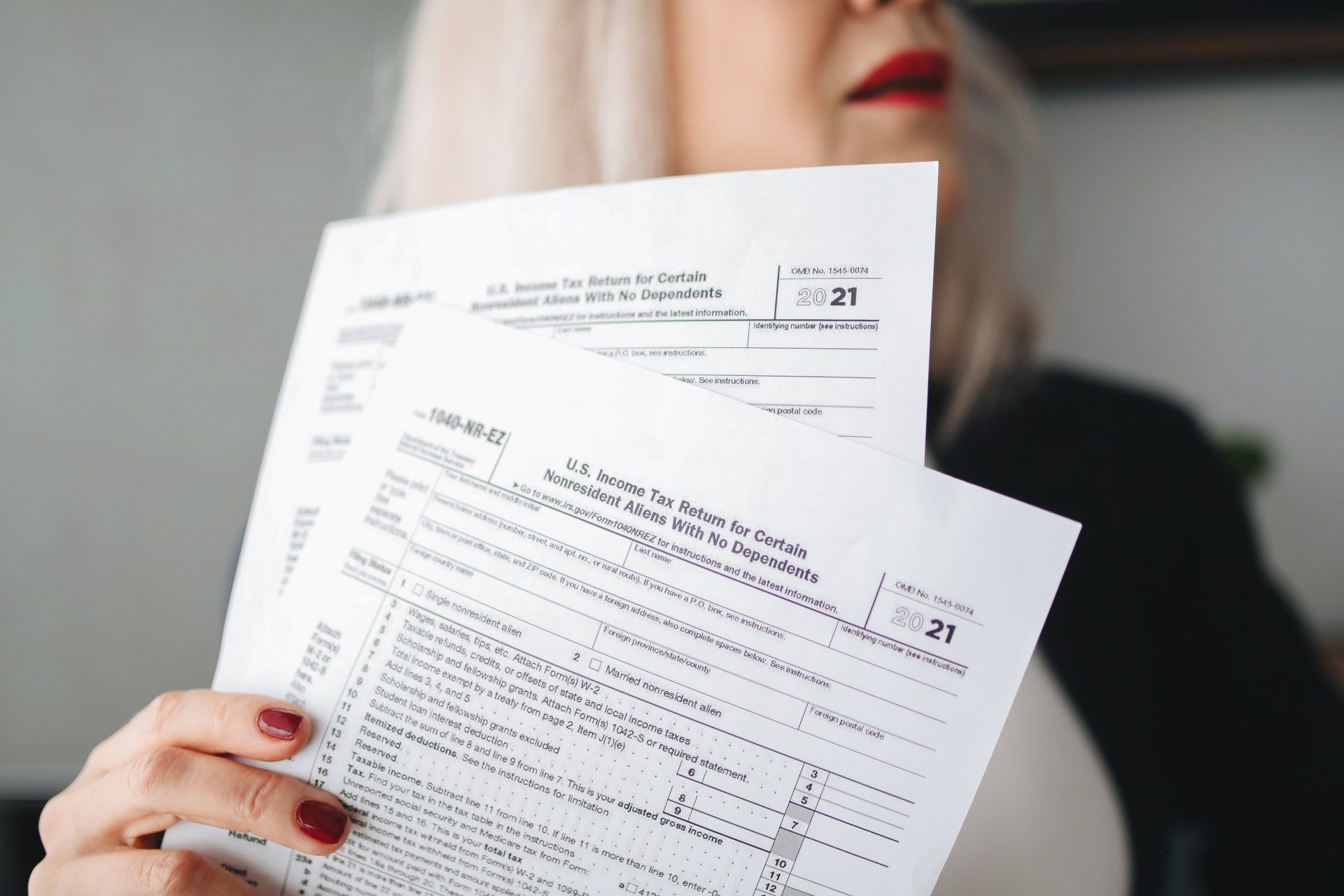What to expect at your N-400 interview
Alexandra Fuxa • March 9, 2023
You have reached the end of your journey to become a US Citizen – you’ve had your green card for the required amount of time, and you have successfully completed and filed your N-400 form to finally apply to become a US Citizen. You just got your N-400 interview notice in the mail, but what happens at this interview?
The N-400 interview consists of two separate parts: a test, and an actual interview. Below, we will go over each part in more detail:
- Part I – Naturalization Test
The first part of your N-400 interview will consist of a test. The test is made up of two components: English, and civics. During the English portion of the test, you must demonstrate you understand the English language and that you have the ability to read, write, and speak basic English. The officer will ask you to correctly read one sentence aloud and will also ask you to correctly write down one sentence.
During the civics test, you will answer important questions about American government and history. There is a list of 100 possible questions the officer could ask you. However, the officer will only ask 10 questions during your interview, and you only need to answer 6 of those questions correctly in order to pass.
- Part II – Naturalization Interview
After you have passed your Naturalization Test, the officer will inform you that you have passed the test and will move on to the Naturalization interview. During this interview, the officer will review your N-400 petition with you. The officer will make sure all the information listed on the application is accurate and will correct any mistakes or updates on the form. The officer will also go over your travel history during the last 5 years. It is important you know your date of departure from the US, your date of arrival back in the US, what country you visited, and what was the purpose of your visit. Finally, you will go over the security questions and the constitution questions on the application together with the officer.
What happens after I pass the test and complete the interview?
Depending on the office your interview is scheduled at, you might be able to become a US Citizen the same day! Some offices offer naturalization ceremonies the day you successfully complete your interview, but you will have to ask the officer if this service is available. If it is not, no worries – you will be scheduled to come back for a naturalization ceremony. In the naturalization ceremony, you will take an oath of allegiance and will be given your official naturalization certificate. It is very important to keep your green card until your naturalization certificate is issued. At the naturalization ceremony, an officer will explain the process to get a social security number and a passport.
What if I don’t pass the civics test?
If you do not pass the civics test on your first try, USCIS will reschedule your appointment and you will come back on a different day to retake the test. It is very important to study, since you only have 2 attempts to take the English and civics test. You can find the 100 possible questions the officer can ask you at this link:
This blog is not intended to be legal advice and nothing here should be construed as establishing an attorney client relationship. Please schedule a consultation with an immigration attorney before acting on any information read here.
Similar Posts

To be eligible for U.S. naturalization based on being a lawful permanent resident for at least five years, you must: Prove you have been a lawful permanent resident of the U.S. for at least five years; Demonstrate continuous residence in the U.S. for at least five years immediately before applying for naturalization; Show you have been physically present in the U.S. for at least 30 months out of the five years immediately before applying for naturalization; and Pass the naturalization test. The naturalization test consists of the English and civics test. The applicant must show his/her ability to read, write, and speak basic English. The interviewing USCIS officer will ask the applicant to read a sentence in English and to write a sentence in English. If the applicant demonstrates his/her ability to read, write, and speak English, the applicant passes this portion of the test. The civics test is an oral test, and the applicant is asked questions about the American government and history. The USCIS officer will ask the applicant up to 10 questions from the list of 100 civics test questions. To pass this portion of the test, the applicant must answer at least 6 questions correctly. If the applicant satisfies all of the eligibility requirements and passes the naturalization test, the last step before naturalizing is to attend the oath ceremony to become a naturalized U.S. citizen. If you have any questions and would like more information about your eligibility for naturalization, please contact our office to schedule a consultation with our experienced immigration attorneys.

U.S. Citizenship and Immigration Services made changes to the naturalization application and the filing fee which became effective April 1, 2024. The naturalization application, Form N-400, was updated. The new form edition is dated 04/01/2024. As of June 3, 2024, USCIS will only accept the new form edition. The filing fee for Form N-400 also changed. The prior filing fee was $640.00 plus a biometric fee of $85.00, for a total of $725.00. The new filing fee became effective April 1, 2024, so all naturalization applications postmarked April 1, 2024, or later, must include the new appropriate filing fee. The new general fee if you file a paper application is $760.00, and if you file the application online the fee is $710.00.

The Military Selective Service Act requires all men living in the United States to register with the Selective Service System within 30 days of turning 18 years old and up to 26 years of age. The Selective Service System (SSS) is used by the U.S. government to draft soldiers into service during times of war. There are a few exceptions to the registration requirement: First, if you hold non-immigrant status until the age of 26, you do not have to register with the SSS. Second, if you enter the U.S. after the age of 26, you do not have to register with the SSS, as the age requirement to register is between 18 and 26. Third, men born after March 29, 1957, and before December 31, 1959, are not required to register. To verify online go to: https://www.sss.gov/verify/ . The information you will need to provide is your last name, social security number, and date of birth. If you find your registration record, download, and print an official Selective Service Registration Acknowledgement Letter from the website and include it with your application. This is sufficient to show that you registered. If you can’t verify your registration because you don’t have a social security number or you didn’t have one when you registered, or you prefer to call, you need to call the SSS at: (888) 655-1825 . Note, failure to register will not automatically lead to the U.S. Citizenship and Immigration Services denying your naturalization application. In fact, even if you did not register and you were required to do so, the USCIS cannot deny your application if you show that you did not know you were required to register, or the failure to register wasn’t intentional. If you have any questions, please schedule a consultation with one of our experienced attorneys and we will be more than happy to assist you.

Once you have connected with a college program, have been admitted to the school, and deemed eligible to compete athletically, you will need to secure an F-1 student visa in order to actually attend your new college and begin your time as a student athlete. The first step in the visa process is to receive your Form I-2

For many talented athletes around the world, U.S. college athletics represent a remarkable opportunity to combine elite athletic competition with higher education. In sports such as basketball, soccer, track and field, and tennis, among others, hundreds of colleges and universities across the United States offer struct

Under the new regulation, if a person filed or files Form I-589, Application for Asylum and for Withholding of Removal after October 1, 2024, and the application remains pending with USCIS for 365 days, the applicant must pay an Annual Asylum Fee (AAF) on the one-year anniversary of his or her filing date.



